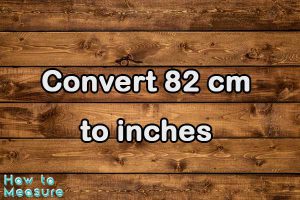Finding the perfect pair of horse riding boots can be a challenge. Not only do you need to find the right style, but you also need to make sure the boots fit correctly. The right fit is essential for comfort and safety when riding. This article will provide a comprehensive guide on measuring horse riding boots, from foot to calf size and height. We will also provide tips for choosing the right boot style and breaking into your new boots. In the essay we in How to measure will talk more about this topic.
Types of Riding Boots
Regarding horse riding boots, there are several types to choose from. These include paddock boots, tall boots, and field boots. Paddock boots are ankle-high boots that are designed for everyday riding. They are usually leather and feature a low heel and a zipper closure. Tall boots are designed for show jumping and dressage.

They are usually made of leather and feature a higher heel and a full-length zipper. Field boots are designed for cross-country riding and are usually made of synthetic materials. They feature a higher heel and a full-length zipper. When it comes to measuring horse riding boots, it is essential to consider the foot size, calf size, and height of the rider.
How to Measure Foot Size for Horse Riding Boots?
When measuring for horse riding boots, getting the right fit for your feet is essential. You will need a ruler or measuring tape to measure your foot size. Start by standing up straight and placing your foot on the ruler or measuring tape. Ensure your heel is against the wall and your toes are pointing forward. Measure from the tip of your longest toe to the back of your heel. This measurement is your foot size. It is essential to measure both feet as they may be different sizes. Once you have your foot size, you can use this to find the right size boot for you.
How to Measure Calf Size?
Measuring your calf size is essential when determining the right fit for horse riding boots. To measure your calf size:
- Stand up straight and wrap a measuring tape around the widest part of your calf.
- Make sure the tape is snug but tight enough.
- Once you have your measurement, compare it to the size chart provided by the boot manufacturer.
Generally, riding boots come in three sizes: small, medium, and large. It is best to go with the larger size for a better fit if you are in between sizes. Remember, horse riding boots should fit snugly around the calf to ensure a secure fit while riding.
How to Measure Height ?
Measuring the height of horse riding boots is essential in ensuring a proper fit. You will need a measuring tape and a flat surface to do this. Start by standing on a flat surface with your feet together and your heels against the wall. Measure from the floor to the top of your leg, just below the knee. This measurement will help you determine the correct height of the boot. When shopping for horse riding boots, look for boots at least two inches taller than your measured height. This will ensure that your boots will fit comfortably and provide adequate protection. Additionally, consider boots with a higher shaft if you plan to ride in deep mud or water.
Choosing the Right Boot Style?
When measuring for horse riding boots, selecting the right boot style for your riding needs is essential. Several types of riding boots are available, including field boots, dress boots, and paddock boots. Field boots are designed for jumping and cross-country riding, while dress boots are designed for dressage and show riding. Paddock boots are designed for everyday riding and are often used for schooling. Choosing a boot style appropriate for the riding you will be doing is essential.
Additionally, some boots come with extra features such as elastic laces, zippers, and extra padding. These features can make the boots more comfortable and easier to put on and take off. When selecting a boot style, it is essential to consider the features that will best suit your needs.
Tips for Fitting Horse Riding Boots
When trying on a new pair of horse riding boots, wear the same socks you would typically wear when riding. This will help ensure a better fit.
- Make sure the boots fit snugly but not too tight. If the boots are too tight, they may cause discomfort or injury.
- Make sure the heel of the boot fits securely and does not slip up and down.
- Check the toe box to ensure it is wide enough to allow your toes to move freely.
- Make sure the boots are comfortable when walking around.
- If you buy boots online, check the return policy if the boots do not fit properly.
Tips for Breaking in Horse Riding Boots
Breaking in a new pair of horse riding boots can be daunting. To ensure that your boots are comfortable and fit correctly, it is essential to take the time to break them in properly. Here are some tips for breaking in your horse riding boots:
1. Wear them around the house: Wear them for a few hours before taking your boots out for a ride. This will help to soften the leather and make them more comfortable.
2. Start with short rides: When you are ready to take your boots out for a ride, start with short rides and gradually increase the length of your rides. This will help to ensure that your boots are properly broken in.

3. Use a boot stretcher: If your boots feel too tight, use a boot stretcher to help stretch them out. This will help to make them more comfortable and will help to prevent blisters.
4. Use a leather conditioner: Applying a leather conditioner to your boots will help to soften the leather and make them more comfortable.
5. Wear socks: Wearing socks with your boots will help to prevent blisters and will help to keep your feet warm.
6. Wear your boots often: The more you wear them, the more comfortable they will become. Make sure to wear them often to ensure that they are properly broken in.
7. Have patience: Breaking in a new pair of boots can take time, so be patient and give your boots the time they need to break in properly.
Troubleshooting Common Fitting Issues in How to Measure for Horse Riding Boots
A proper fit is essential for comfort and safety when it comes to horse riding boots. However, some common fitting issues can arise when measuring for horse riding boots. To ensure a proper fit, knowing these common issues and how to troubleshoot them is essential.
- Heel Slippage: Heel slippage is one of the most common fitting issues regarding horse riding boots. To prevent heel slippage, ensure the boot fits snugly around the heel and ankle. If the boot is too loose, consider adding an insole or heel grip to help keep the heel in place.
- Too Tight: If the boot is too tight, it can cause discomfort and pain. Ensure the boot is tight enough in all areas to ensure a proper fit. If the boot is too tight, consider sizing up or adding a thicker sock to provide more cushioning.
- Too Loose: If the boot is too loose, it can cause instability and can even lead to an injury. Ensure the boot fits snugly around the foot and ankle to ensure a proper fit. If the boot is too loose, consider sizing down or adding an insole to provide more support.
- Poor Quality: Poor quality boots can cause various fitting issues. To ensure a proper fit, make sure to purchase boots from a reputable brand that is known for quality and durability.
By being aware of these common fitting issues and how to troubleshoot them, you can ensure a proper fit when measuring for horse riding boots.
Final thoughts
In conclusion, measuring for horse riding boots requires careful attention to detail and a few simple steps. The most commonly used method for measuring riding boots is the “tracing method,” which involves tracing the outline of the foot and ankle onto a piece of paper and taking various measurements, including the length, width, and calf circumference. It’s also important to consider the type of riding being done, as different disciplines may require different styles of boots. When trying on boots, it’s crucial to ensure that they fit snugly but comfortably and that there is adequate room for the foot and calf to move. Additionally, it’s essential to break in new boots gradually to prevent discomfort and injury. With these simple steps in mind, anyone can find the perfect fit for their horse riding boots, ensuring comfort, safety, and optimal performance in the saddle.











